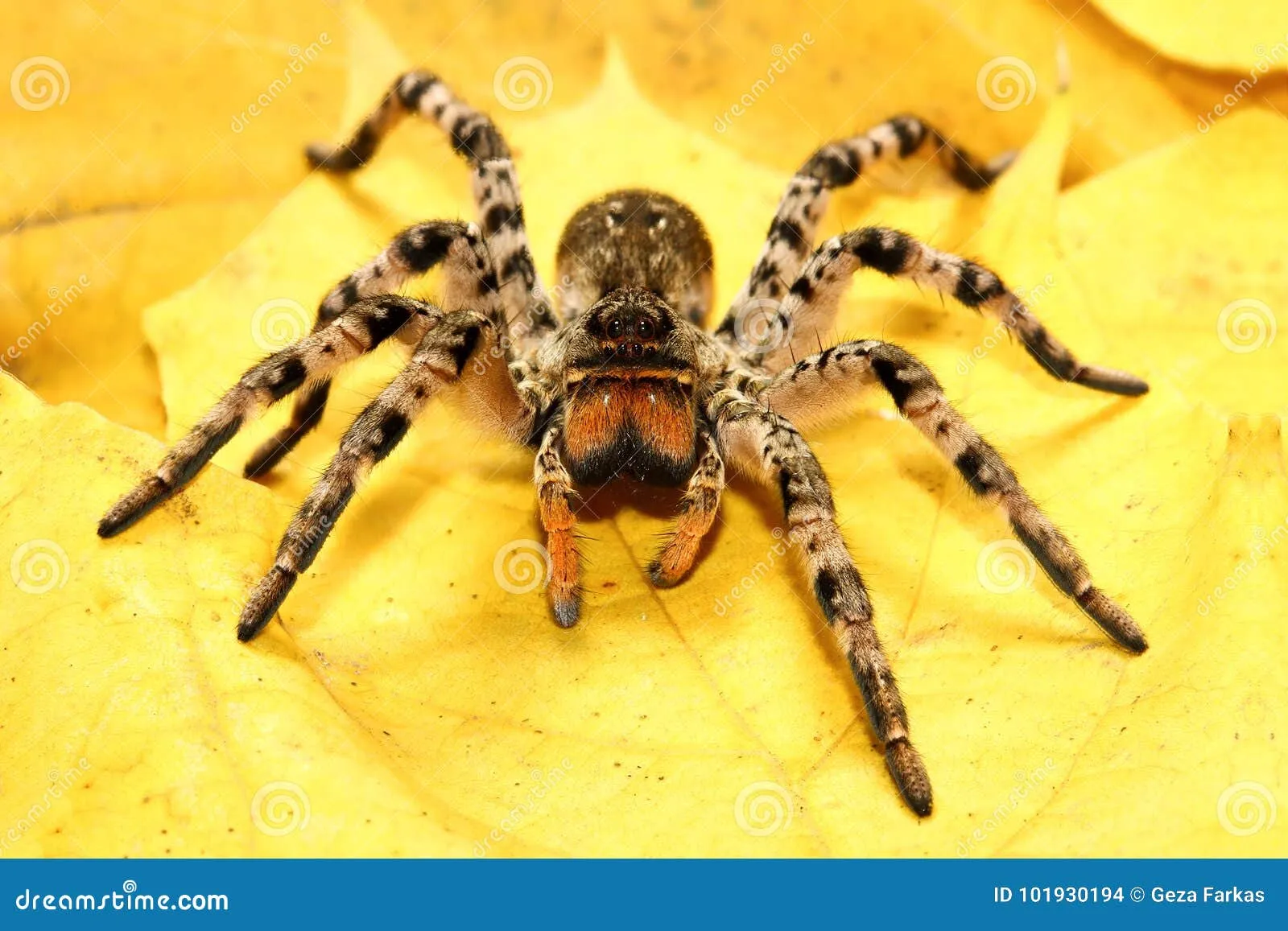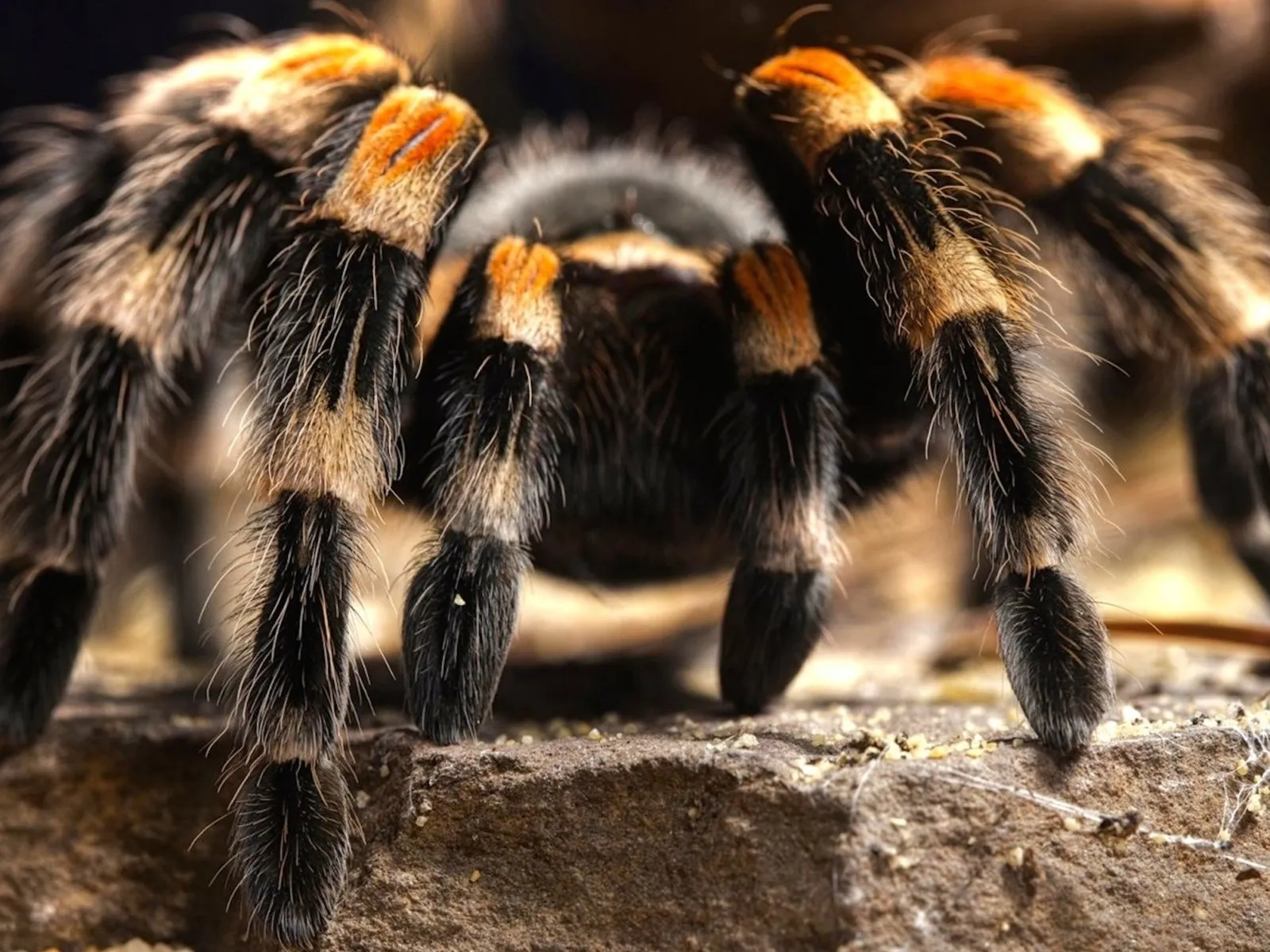Top 7 Tarantula Facts You Need to Know
Tarantulas, with their imposing size and often hairy appearance, are fascinating creatures that have captivated and sometimes frightened people for centuries. These impressive arachnids are more than just the stuff of nightmares; they are complex, resilient, and ecologically important members of their ecosystems. From their diverse habitats to their unique behaviors, there’s a lot to learn about these often-misunderstood spiders. This article will delve into seven of the most interesting facts about tarantulas, shedding light on their lives and dispelling some common myths. Get ready to explore the world of these amazing creatures and discover what makes them so captivating.
Appearance and Physical Characteristics
Tarantulas are instantly recognizable due to their large size and distinctive appearance. They belong to the Theraphosidae family, which encompasses a wide variety of species, each with unique characteristics. Their bodies are divided into two main parts the cephalothorax (fused head and thorax) and the abdomen. They have eight legs, each covered in sensory hairs that help them detect vibrations and navigate their environment. Their bodies are also covered in a dense coat of hairs, which serve various functions, including sensory perception and defense. The coloration of tarantulas varies widely depending on the species and can range from drab browns and blacks to vibrant blues, oranges, and reds.
Size and Lifespan of Tarantulas

One of the most striking aspects of tarantulas is their size. Some species, like the Goliath Birdeater (Theraphosa blondi), can have a leg span of over 12 inches, making them some of the largest spiders in the world. However, the size varies greatly, with some species being considerably smaller. The lifespan of tarantulas is another remarkable characteristic. Females can live for up to 20-30 years in captivity, while males typically have shorter lifespans, often only living for a few years after reaching maturity. The long lifespans of female tarantulas contribute to their ability to produce multiple egg sacs over their lives.
Color Variations in Tarantulas
The color variations in tarantulas are stunning and diverse. The vibrant colors often serve as a form of camouflage, helping them blend in with their surroundings. For example, some tarantulas have bright blue legs or metallic-colored carapaces, while others are more muted, blending with the forest floor or rocky terrain. These color variations are a result of the presence of different pigments and the way light interacts with the hairs on their bodies. The specific colors and patterns can also be used for identification purposes, helping researchers and enthusiasts distinguish between different species.
Habitat and Distribution
Tarantulas are found in a wide range of habitats across the globe, primarily in tropical and subtropical regions. They have adapted to various environments, from rainforests and grasslands to deserts and mountainous areas. Their habitat preferences are often dictated by factors such as temperature, humidity, and the availability of prey. Some species are terrestrial, living in burrows in the ground, while others are arboreal, living in trees or shrubs. The ability to adapt to these different environments is a testament to their resilience and evolutionary success.
Where Tarantulas Live

Tarantulas live in diverse habitats. Terrestrial tarantulas construct burrows in the ground, often lined with silk to provide stability and protection. Arboreal tarantulas, on the other hand, live in trees, using silk to create nests or shelters. Some species may also be found under rocks, in crevices, or in abandoned animal burrows. The specific location of their homes is often influenced by factors such as prey availability and the need to avoid predators. They carefully select locations that offer the best combination of protection and access to resources.
Global Distribution of Tarantulas
Tarantulas are found on every continent except Antarctica. They are most diverse in the Americas, with numerous species found throughout North, Central, and South America. They are also present in Africa, Asia, Australia, and parts of Europe. The distribution of specific species is often determined by climate and the availability of suitable habitat. The ongoing study and classification of tarantula species continue to expand our understanding of their geographic ranges.
Behavior and Lifestyle
Tarantulas are generally solitary creatures, except during mating season. They are primarily nocturnal hunters, spending the day in their burrows or hiding places. They are ambush predators, relying on their sensitive hairs to detect the vibrations of approaching prey. Their behavior is influenced by a range of factors, including environmental conditions, the availability of food, and the need to avoid predators. The study of their behavior provides valuable insights into their ecological roles and their adaptations to different environments.
Hunting and Feeding Habits

Tarantulas are carnivores, and their diet consists mainly of insects, but they will also eat other invertebrates, small lizards, and even small mammals or birds. They are opportunistic hunters, waiting patiently for prey to come within striking distance. Once they detect movement, they quickly ambush their target, injecting venom through their fangs to paralyze and kill it. They then use their chelicerae (mouthparts) to break down the prey and suck out the nutrient-rich fluids. The size of the prey they can handle depends on the size of the tarantula.
Defensive Mechanisms
Tarantulas have several defensive mechanisms to protect themselves from predators. One of the most common is the urticating hairs. These hairs are located on the abdomen and can be flicked towards a potential threat, causing irritation and discomfort. Some species also have the ability to bite, injecting venom that can cause localized pain and swelling. In addition to these defenses, tarantulas may also hiss or raise their front legs in a threat display. These behaviors are designed to deter predators and protect the spider from harm.
Venom and Bites
While tarantulas are venomous, their bites are rarely life-threatening to humans. The venom is primarily used to subdue prey and contains a complex mixture of toxins. The effects of a tarantula bite can vary depending on the species, the amount of venom injected, and the individual’s sensitivity. Common symptoms include localized pain, redness, swelling, and itching. In rare cases, more severe reactions can occur, such as muscle cramps or nausea.
Are Tarantula Bites Dangerous?

Tarantula bites are generally not considered dangerous to humans. The venom is not highly toxic, and the effects are typically mild. However, people with allergies or those who are particularly sensitive may experience more severe reactions. It’s important to remember that any bite, even from a non-venomous spider, can cause some level of discomfort and potentially lead to secondary infections if the wound is not properly cared for. Seek medical attention if you experience severe symptoms or if you are concerned about a bite.
First Aid for Tarantula Bites
If you are bitten by a tarantula, there are several steps you can take to provide first aid. First, wash the bite area with soap and water to prevent infection. Apply a cold compress to reduce swelling and pain. If you experience severe symptoms, such as difficulty breathing, dizziness, or muscle cramps, seek immediate medical attention. It is also helpful to identify the species of tarantula if possible, as this information can assist medical professionals in providing appropriate treatment. Keep the wound clean and monitor for signs of infection.
Breeding and Reproduction
The breeding and reproduction of tarantulas is a fascinating process. The timing of mating often depends on environmental factors, such as temperature and humidity. Males typically reach maturity before females and embark on a search for a mate. The courtship rituals vary between species, but often involve elaborate displays and the exchange of signals. After mating, the female will lay eggs, which she will protect and care for until the spiderlings hatch. The process of raising offspring is a delicate and complex aspect of their life cycle.
Mating Rituals of Tarantulas

Mating rituals are crucial for the successful reproduction of tarantulas. Males often use a variety of strategies to attract females. They might drum on the ground, vibrate their bodies, or present the female with a nuptial gift, such as a wrapped insect. These displays are designed to signal their species and ensure that the female is receptive to mating. The male will then approach the female cautiously, and if she accepts, they will mate. After mating, the male will often leave quickly to avoid being eaten by the female.
Egg Sacs and Spiderlings
After mating, the female tarantula will lay her eggs and enclose them in a silken egg sac. The number of eggs can vary depending on the species, ranging from a few dozen to several hundred. The female carefully protects the egg sac, keeping it clean and ensuring the proper temperature and humidity for the eggs to develop. Once the eggs hatch, the spiderlings will stay with the mother for a period of time, sometimes molting several times before dispersing to live independently.
Tarantulas as Pets
Tarantulas are becoming increasingly popular pets, attracting enthusiasts worldwide. Their relatively low-maintenance needs, coupled with their fascinating behavior and impressive appearance, make them attractive to many. However, owning a tarantula requires careful consideration and a commitment to providing proper care. This includes providing a suitable habitat, ensuring adequate food and water, and understanding their specific needs. Responsible ownership is essential to ensure the well-being of these amazing creatures.
Caring for a Pet Tarantula

Caring for a pet tarantula involves creating a suitable environment that mimics its natural habitat. This includes providing an appropriately sized enclosure, substrate, and hiding places. The temperature and humidity levels must be carefully monitored and maintained. Regular feeding with appropriate insects, such as crickets or mealworms, is essential. Clean water should be available at all times. It is also important to handle the tarantula carefully, avoiding unnecessary stress. Regular observation of the tarantula’s behavior can help identify any health issues early on.
Choosing a Healthy Tarantula
When choosing a tarantula as a pet, it is important to select a healthy individual. Look for a tarantula that is active and alert, with a healthy appetite. Check for any signs of illness, such as lethargy, loss of appetite, or unusual behaviors. The abdomen should be plump and not shriveled. The legs should be intact and move freely. It’s also wise to research the specific species and its care requirements before making a purchase. Buying from a reputable breeder or pet store will help ensure that you are getting a healthy and well-cared-for tarantula.
Conservation Status and Threats
Many tarantula species face threats in the wild, including habitat loss, deforestation, and the pet trade. Understanding these threats and promoting conservation efforts is essential to ensure the survival of these fascinating creatures. Conservation efforts can include habitat preservation, regulating the pet trade, and educating the public about the importance of tarantulas in their ecosystems. By supporting these efforts, we can contribute to the preservation of tarantulas for future generations.
Threats to Tarantula Populations
The primary threats to tarantula populations include habitat loss due to deforestation, agriculture, and urbanization. The pet trade can also put pressure on wild populations, as some species are collected for sale. Climate change is also a potential threat, as it can alter habitats and affect the availability of prey. The use of pesticides and other chemicals can also negatively affect tarantula populations. Awareness of these threats is vital for implementing effective conservation strategies.
Conservation Efforts
Various conservation efforts are being undertaken to protect tarantulas. These include habitat preservation through the establishment of protected areas, regulation of the pet trade to prevent over-collection, and captive breeding programs. Research into tarantula populations and their habitats is crucial for informing conservation strategies. Public education about the importance of tarantulas and their role in ecosystems can also help promote their conservation. Supporting organizations involved in tarantula conservation is another way to contribute to their preservation.
In conclusion, tarantulas are remarkable creatures with unique adaptations, behaviors, and ecological roles. From their diverse habitats and physical characteristics to their fascinating breeding rituals and defensive mechanisms, they exemplify the wonders of the natural world. By understanding these amazing facts about tarantulas, we can appreciate their importance and contribute to their conservation. The more we learn, the more we can respect and protect these often-misunderstood yet captivating creatures.
